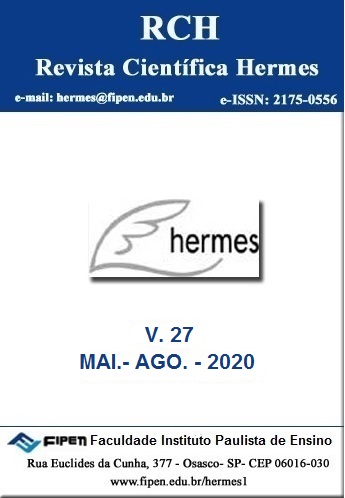Stochastic analysis of the economic viability of an irrigation spin-off
DOI:
https://doi.org/10.21710/rch.v27i0.561Keywords:
Academic Spin-Off, Drip Irrigation, Economic ViabilityAbstract
The general objective of this work is to present an economic viability analysis for an academic spin-off, to be born from a research project of technological innovation, that supports the decision-making of the researchers who intend to undertake and also helps the incentives to the adoption an entrepreneurship culture within the university. Some know that the spin-off can be understood as companies founded on the intention to exploit some of the intellectual property generated in academic institutions. The method used to investigate and reach the proposed objective was the bibliographical, documental and ex post facto study, with an exploratory and descriptive character of the research called: “A process using the CO2 for dissolving precipitates of carbonates in irrigation systemsâ€. The requirements for attending the economic viability criteria were measured through the calculations of NPV, IRR and payback, considering a five year deadline and a hurdle rate of 20%. In addition, the issues of technological innovation were considered, since it has a high sensitivity in relation to the market. Thus, in addition to the traditional viability methods, a Monte Carlo simulation was performed, which allows to analyze the results statistically in terms of probability. The results obtained through this analysis were positive. Furthermore, they contribute to clarify the doubts of researchers, regarding the viability of their technology.
References
Aljifri, K. (2007). Measurement and Motivations of Earnings Management: A Critical Perspective. Journal of Accounting – Business & Management, 14, 75-95.
Beatty, A. & Liao, S. (2014). Financial accounting in the banking industry: A review of the empirical literature. Journal of Accounting & Economics, 58, 339-383. https://doi.org/10.1016/j.jacceco.2014.08.009
Bischoff, L., & Lustosa. P. R. B. (2014). PCLD e Suavização de Resultados em Instituições Financeiras no Brasil. Encontro da ANPAD, Rio de Janeiro, RJ, Brasil, 38.
Bortoluzzo, B. A., Sheng, H. H. & Gomes, P. A. L. (2016). Earning management in Brazilian financial institutions. Revista de Administração, 51(2), 182-197. doi: 10.5700/rausp1233
Cornett, M. M., McNutt, J. J. & Tehranian H. (2009). Corporate governance and earnings management at large U.S. bank holding companies. Journal of Corporate Finance, 15(4), 412-430. https://doi.org/10.1016/j.jcorpfin.2009.04.003
Dechow, M. P., Sloan, G. R. & Sweeney P. A. (1994). Detecting earnings management. The accounting Review, 70(2), 193-225. https://www.jstor.org/stable/248303
Dechow, p., Ge, W. & Schrand C. (2010). Understanding earnings quality: a review of proxies, their determinants and their consequences. Journal of Accounting and Economics (50), 344-401. https://doi.org/10.1016/j.jacceco.2010.09.001
De Faro, C. (Org). (2014) Administração bancária: uma visão aplicada. São Paulo: FGV Editora.
Ellul, A., & Yerramilli, V. (2011). Stronger Risk Controls, Lower Risk: Evidence from U.S. Bank Holding Companies. The Journal of Finance, 68(5), 1-61. https://doi.org/10.1111/jofi.12057
Healy, M. P. (1985). The effect of bonus schemes on accounting decisions. Journal of Accounting and Economics (7), 85-107. https://doi.org/10.1016/0165-4101(85)90029-1
Healy, M. P. & Wahlen, M. J. (1998). A review of the earnings management literature and it’s implications for standard setting. Accounting Horizons, 13(4), 365-383. https://doi.org/10.2308/acch.1999.13.4.365
Hepworth, S. R. (1953). Smoothing periodic income. The Accounting Review, 28(1), 32-39. https://www.jstor.org/stable/241436
Laeven, L. & Majnoni, G. (2003). Loan loss provisioning and economic slowdowns: too much, too late? Journal of Financial Intermediation, 12(2), 178-197. https://doi.org/10.1016/S1042-9573(03)00016-0
Machado, D.; Benetti, J.; Bezerra, F. (2011). Análise da produção científica sobre earnings management em periódicos brasileiros e internacionais de contabilidade. Revista Portuguesa e Brasileira de Gestão, 10(4), 50-66. Disponível em: <http://www.scielo.mec.pt/pdf/rpbg/v10n4/v10n4a06.pdf>. Acesso em: 21 set. 2019
Machado, D. G., & Beuren, I. M. (2014). Gerenciamento de resultados: análise das publicações em periódicos brasileiros de contabilidade. Enfoque: Reflexão Contábil, 33(1). https://doi.org/10.4025/enfoque.v33i1.17712
Martinez, L. A. (2008). Detectando earnings management no Brasil: estimando accruals discricionários. Revista Contabilidade e Finanças, 19(46), 7-17. https://doi.org/10.1590/S1519-70772008000100002
Norden, L.,& Stoian, A. (2014). Bank earnings management through loan loss provisions: A double-edged sword? De Netherlandsche Bank Nor the European Central Bank, 1-45. http://dx.doi.org/10.2139/ssrn.2369798
Ronen, J., & Yaari, V. (2008). Earnings management Emerging Insights in Theory Practice and Research. Springer Science + Business Media, LLC. https://doi.org/10.1007/s10997-009-9111-z
Schipper, K. (1989). Earnings management. Accounting horizons, 3(4), 91.
Seidler, J. C. O., & Decourt, R. F. (2014). Gerenciamento de resultados: análise bibliométrica dos estudos científicos nacionais no período de 2006 a 2013. Registro Contábil, 5(2), 21-48. http://www.seer.ufal.br/index.php/registrocontabil/article/view/1121/pdf_23
El Sood, A. H. (2012). Loan loss provisioning and income smoothing in US banks pre and post the financial crisis. International Review of Financial Analysis, 25, 64-72. doi:10.1016/j.irfa.2012.06.007
Downloads
Published
How to Cite
Issue
Section
License
Copyright (c) 2020 Revista CientÃfica Hermes - FIPEN

This work is licensed under a Creative Commons Attribution 4.0 International License.






